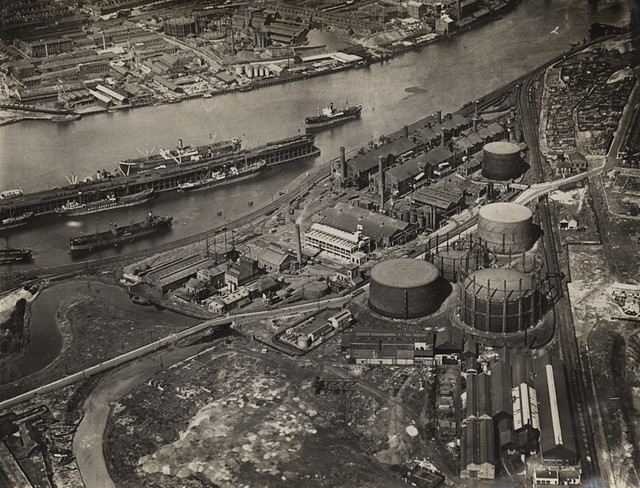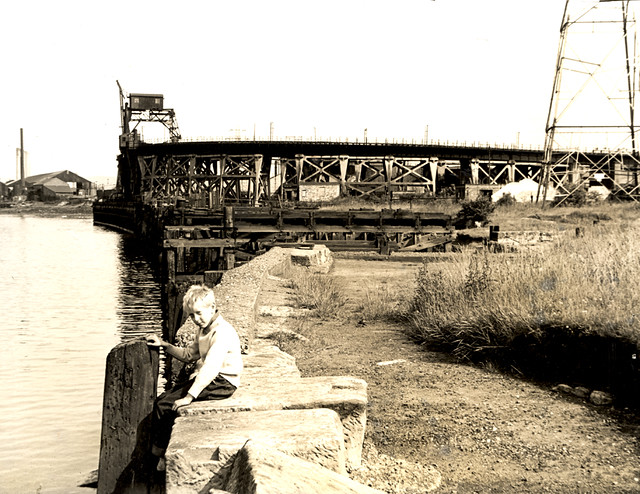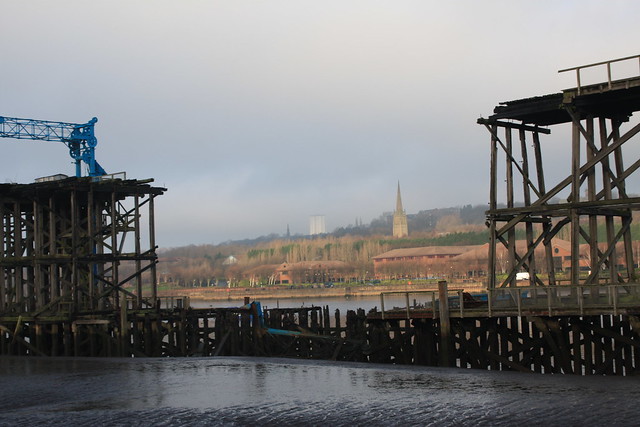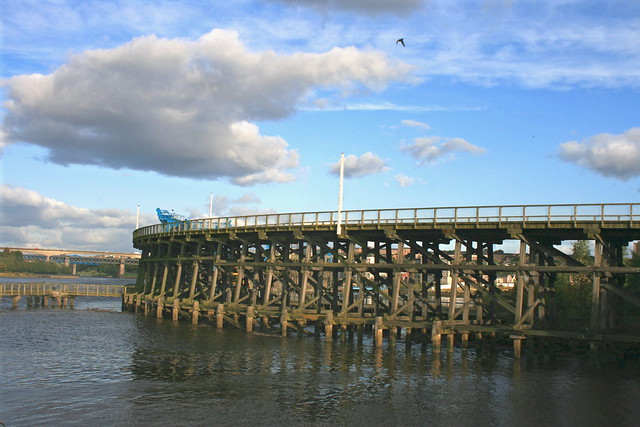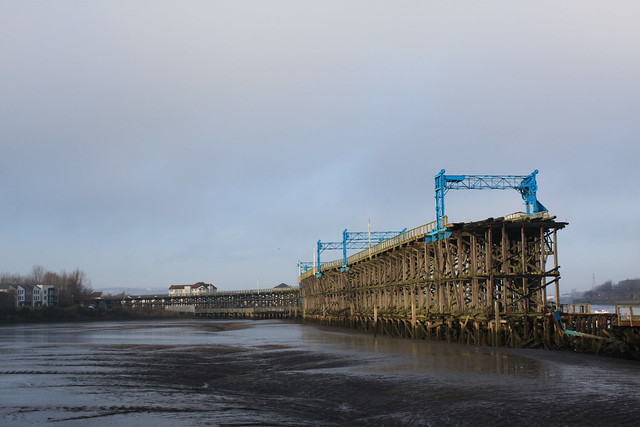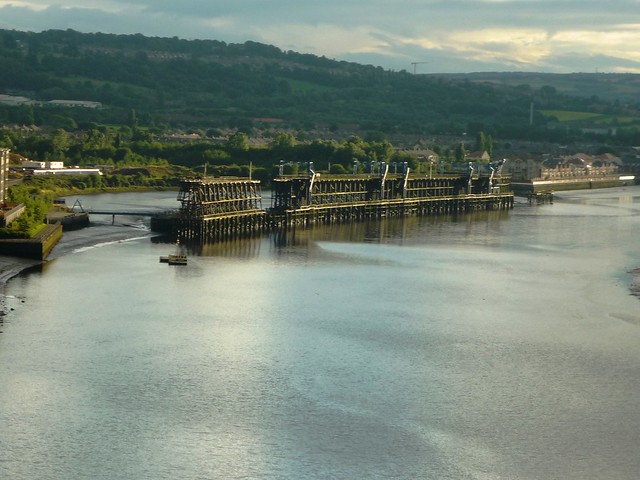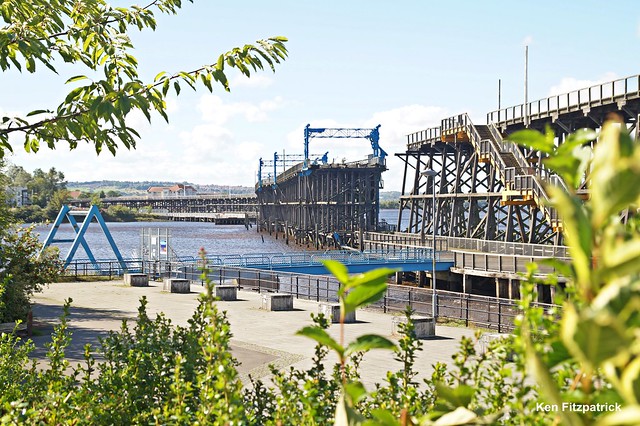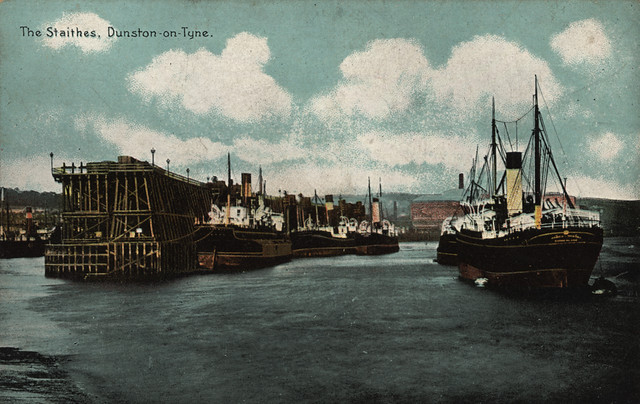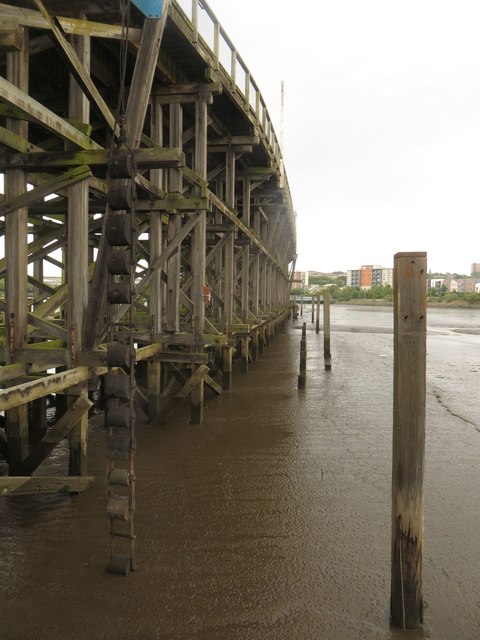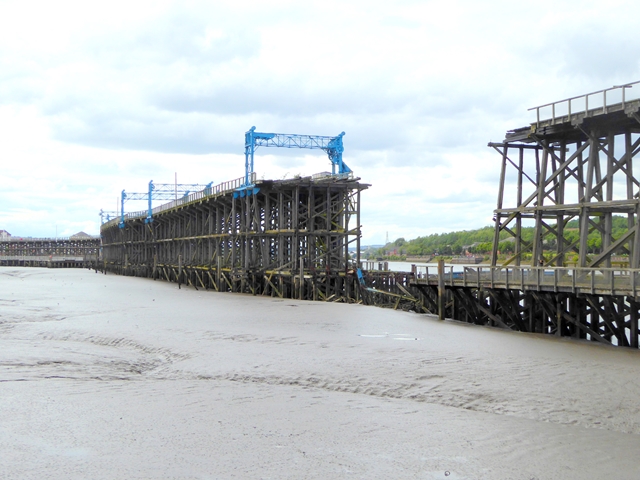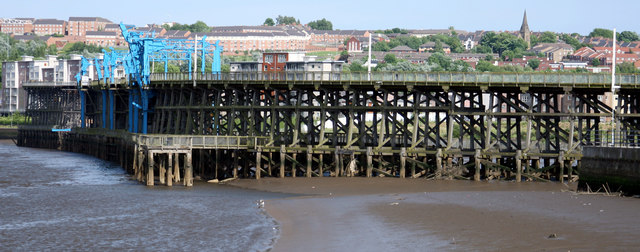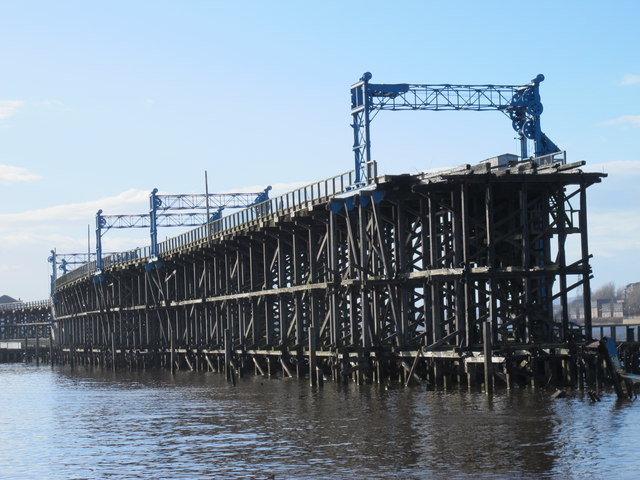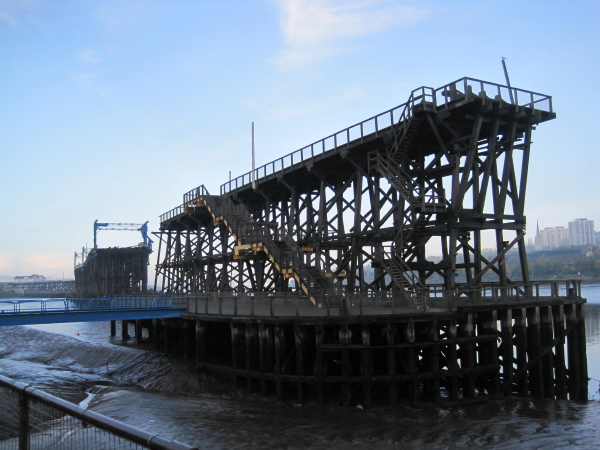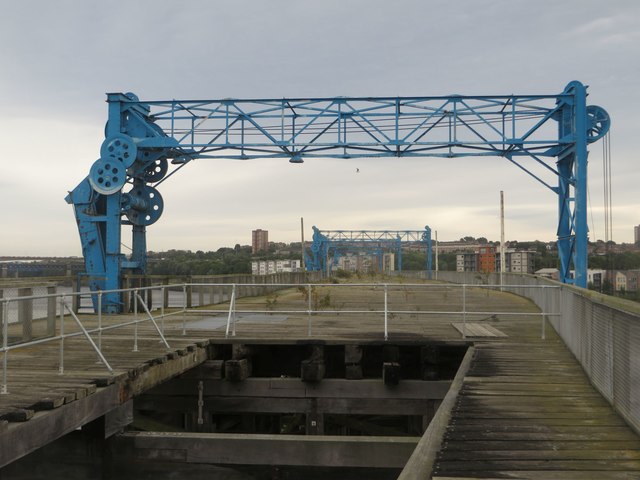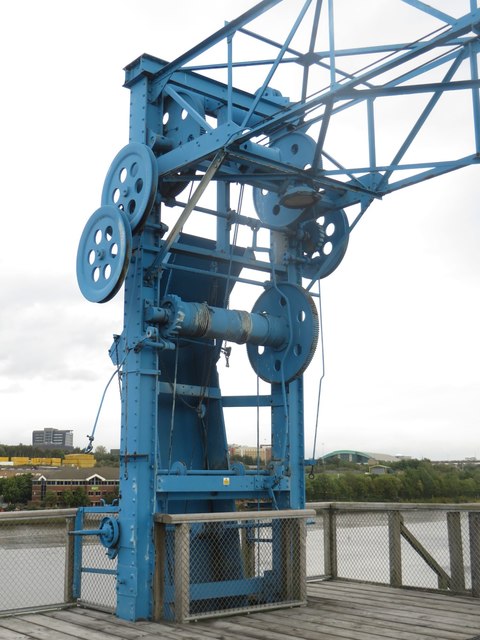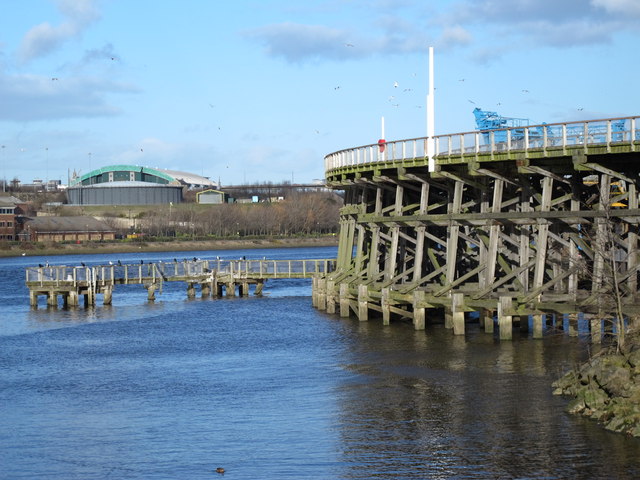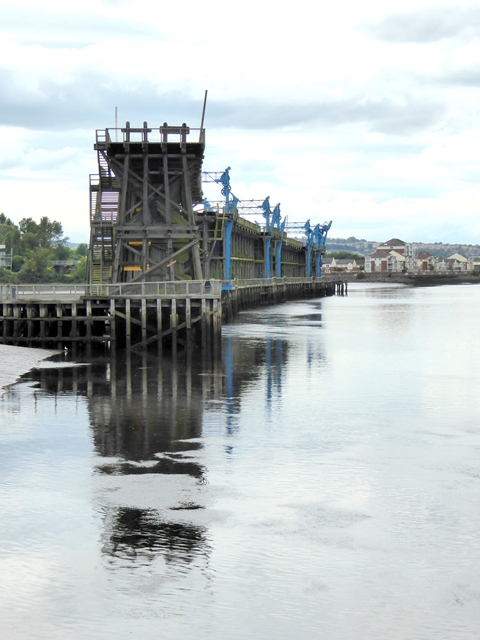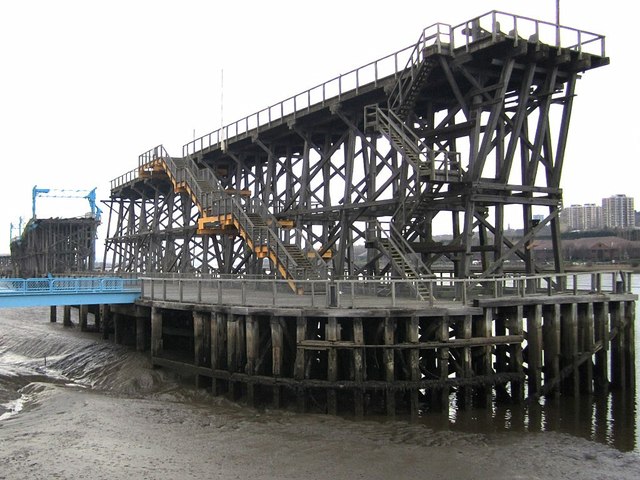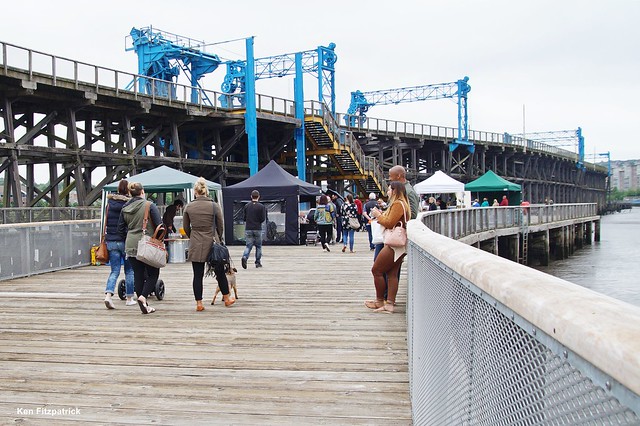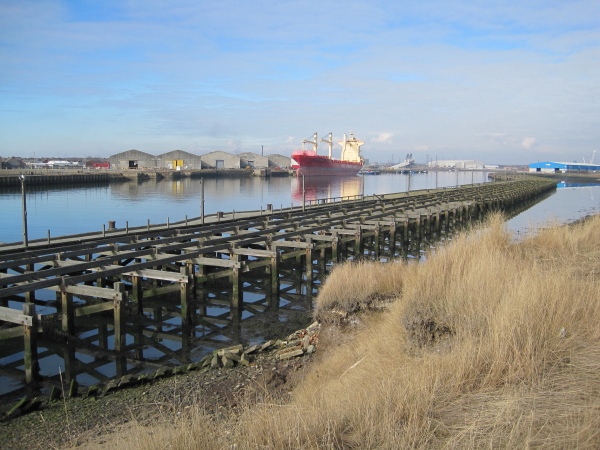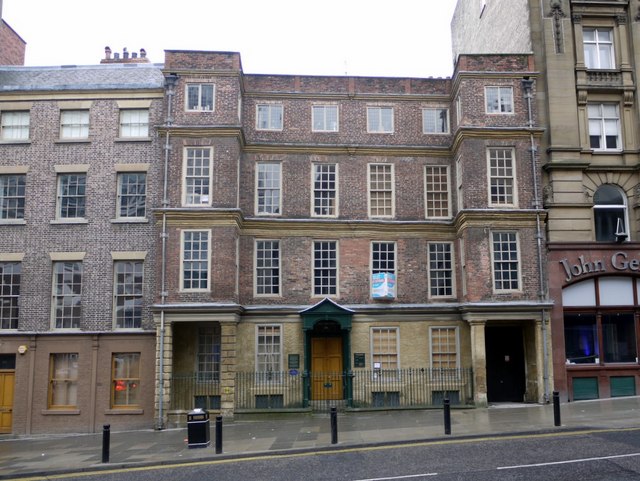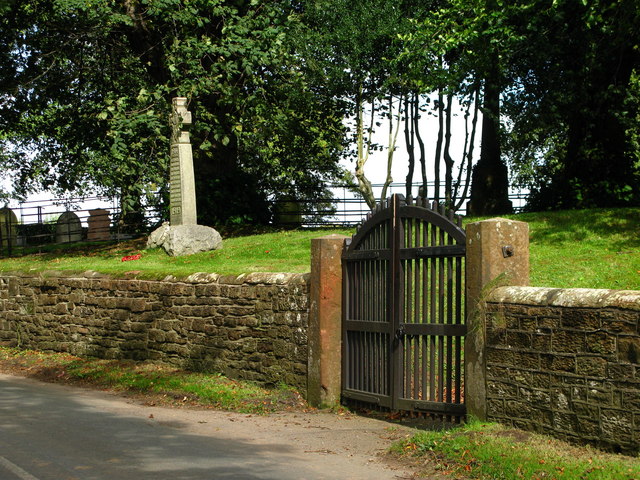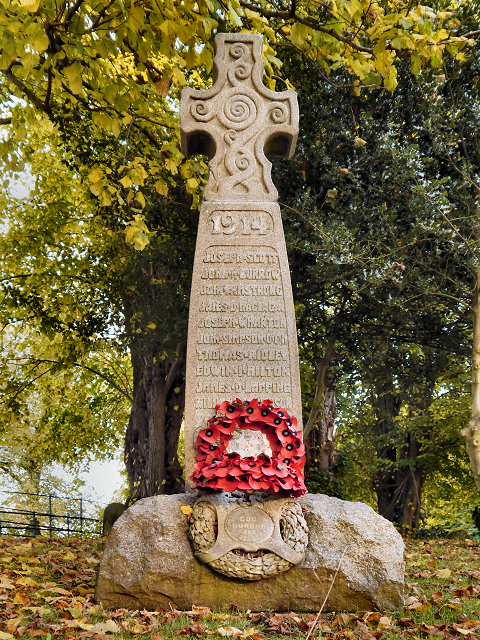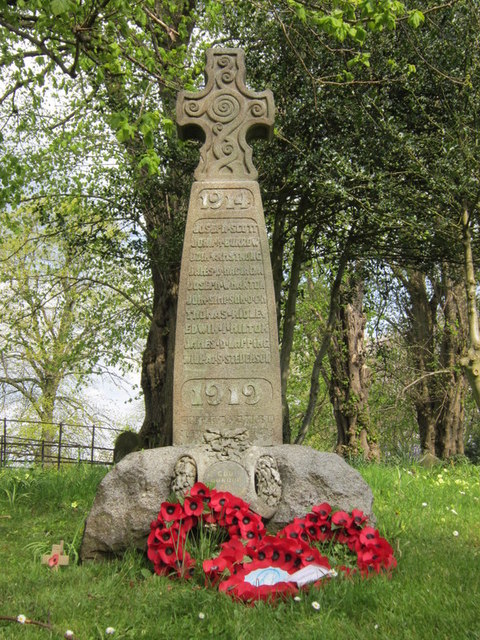Topics > Tyne and Wear > Gateshead > Dunston > Dunston Staiths
Dunston Staiths
 "Dunston Staiths on the River Tyne is believed to be the largest timber structure in Europe, at its height, 5.5m tonnes of coal a year was taken by rail from the Durham coalfields and loaded from the staiths onto ships waiting on the river, which transported coal around the British Isles and Internationally. The North Eastern Railway Company opened Dunston Staiths in 1893 to meet the growing demand to export coal and to save the rail journey to the docks at the mouth of the river. A second set of Staiths was built adjoining the first in 1903 and a tidal basin dug out, providing six berths in all, where colliers could be loaded at all states of the tide...." Tyne & Wear Building Preservation Trust
"Dunston Staiths on the River Tyne is believed to be the largest timber structure in Europe, at its height, 5.5m tonnes of coal a year was taken by rail from the Durham coalfields and loaded from the staiths onto ships waiting on the river, which transported coal around the British Isles and Internationally. The North Eastern Railway Company opened Dunston Staiths in 1893 to meet the growing demand to export coal and to save the rail journey to the docks at the mouth of the river. A second set of Staiths was built adjoining the first in 1903 and a tidal basin dug out, providing six berths in all, where colliers could be loaded at all states of the tide...." Tyne & Wear Building Preservation Trust
Early on Saturday morning 16th May 2020, Dunston Staiths suffered a major arson attack that has severely damaged 5 frames of the precious structure. A campaign, launched by Staiths Friends, volunteers who support the restoration project, is to raise funds:
Dunston Staiths - Arson Response Appeal
For a history of Dunston Staiths see the Visual Timeline
Dunston Staiths and the 1990 Garden Festival
Dunston is particularly known for wooden coal staiths, first opened in 1893 as a structure for loading coal from the North Durham coalfield onto ships. In the 1920s, 140,000 tons of coal per week were loaded from the staiths, and they continued to be used until the 1970s. They were also a shipping point for coke produced at the nearby Norwood Coke Works, as well as pencil pitch manufactured at the Thomas Ness Tar Works using by-products from the Norwood plant and the Redheugh Gasworks. Throughout their working life, motive power for shunting wagons on the staiths and in their extensive sidings known as the Norwood Coal Yard came in the form of locomotives from Gateshead MPD. The staiths' output gradually declined with the contraction of the coal industry, and they were finally closed and partially dismantled in 1980. Now redundant, the railway lines leading to the staiths were lifted, finally allowing the demolition of several low bridges that had become a nuisance to bus operators by limiting the routes available to double-deckers in the area. For many years, the men who worked on the staiths, known as teemers (the men who released the coal from the wagons and operated the loading chutes and conveyors) and trimmers (who had the dangerous job of ensuring the stability of the colliers by levelling the load in their holds as they were filled), had their own room in the nearby Dunston Excelsior Club. For anyone not employed in the club or on the staiths, access to the room was strictly by invite only, and the staithesmen held a reputation for unceremoniously ejecting anyone who fell foul of this rule.
The staiths was restored and opened to the public as part of the Gateshead Garden Festival in 1990, following similar events in Liverpool (1984), Stoke-on-Trent (1986) and Glasgow (1988). The Garden Festival was divided into five zones, Norwood, Eslington, The Boulevard, Dunston and Riverside. It was spread over a large area of Dunston and the lower Team Valley, formerly occupied by heavy industries. Though other parts of the Garden Festival site, such as Dunston, (the site of the Norwood Coal Yard), Eslington, (the site of the tar works), and Norwood, (the site of the coke ovens) in the Team Valley, gained an immediate spur for regeneration, The Boulevard was left as a green space. Riverside, which was centred around the staiths and the site of the former gasworks, was derelict and inaccessible for the remainder of the 1990s, although parts of the site have now been developed into new housing.
Today, the staiths are reputed to be the largest wooden structure in Europe, and are protected as a Listed Building and a Scheduled Ancient Monument.
In 2002, work began on a development of riverside apartments and houses designed by Wayne Hemingway. Known as Staiths South Bank, this development celebrates the area's heritage as well as improving the setting for the historic structure. In the early hours of 20 November 2003, a section of the staiths was destroyed by fire. As a result, access onto the Staiths themselves is not possible, but the structure can be viewed from the new riverside walkway, constructed as part of the Staiths South Bank development. In 2005 Gateshead Council commissioned a study into possible options for the Staiths' restoration.
The Staiths suffered further fire damage in July 2010. Following the award of a Heritage Lottery Fund grant of almost £420,000, restoration of the structure is expected to begin in the near future.
Visit the page: Dunston Staithes for references and further details. You can contribute to this article on Wikipedia.

from http://dunstonstaiths.org.uk/
Dunston Staiths
- A Website about Dunston Staiths and associated Saltmarsh Gardens. It includes details of the restoration project, gallery, directions and visitor information.
Added by
Simon Cotterill

from https://historicengland.org.u…
RIVER TYNE DUNSTON COAL STAITHES - List Entry
- "1890 for the North Eastern Railway. The last operating jetty staithes on the Tyne. Over 1700 feet long, of braced timber construction. Three berths for ships at either side; upper …
Added by
Simon Cotterill

from https://commons.wikimedia.org…
Dunston Staithes on Fire, River Tyne to the West of Newcastle and Gateshead, 3 minutes before fire crew arrives. Taken at 18:06
- Photo by 'DrDaveB2', 7th July, 2010, licensed under the Creative Commons Attribution-Share Alike 3.0 Unported license.
Added by
Simon Cotterill

from https://www.chroniclelive.co.…
Dunston Staiths opens up for the public to take in the spectacular views of the Tyne
- Chronicle Live, 24th March, 2015. "A monument to Tyneside’s industrial past has begun a new life as the river’s latest visitor attraction.
People will now be able to walk along …
Added by
Simon Cotterill


from http://dunstonstaiths.org.uk/
Dunston Staiths
- A Website about Dunston Staiths and associated Saltmarsh Gardens. It includes details of the restoration project, gallery, directions and visitor information.
Added by
Simon Cotterill

from https://historicengland.org.u…
RIVER TYNE DUNSTON COAL STAITHES - List Entry
- "1890 for the North Eastern Railway. The last operating jetty staithes on the Tyne. Over 1700 feet long, of braced timber construction. Three berths for ships at either side; upper …
Added by
Simon Cotterill

from https://commons.wikimedia.org…
Dunston Staithes on Fire, River Tyne to the West of Newcastle and Gateshead, 3 minutes before fire crew arrives. Taken at 18:06
- Photo by 'DrDaveB2', 7th July, 2010, licensed under the Creative Commons Attribution-Share Alike 3.0 Unported license.
Added by
Simon Cotterill

from https://www.chroniclelive.co.…
Dunston Staiths opens up for the public to take in the spectacular views of the Tyne
- Chronicle Live, 24th March, 2015. "A monument to Tyneside’s industrial past has begun a new life as the river’s latest visitor attraction.
People will now be able to walk along …
Added by
Simon Cotterill
